As a passionate plant lover in the UK, I understand the joy and fulfilment that comes from nurturing and caring for indoor plants. There’s something truly magical about bringing nature’s beauty into our homes and creating a tranquil oasis right where we live. If you’re like me, always on the lookout for unique and stunning plants to add to your collection, you’ll love the Aglaonema Maria, also known as Chinese Evergreen.
This elegant indoor plant has captured the hearts of many UK plant lovers, and it’s not hard to see why. With its striking appearance and vibrant foliage, the Aglaonema Maria instantly adds a touch of elegance to any space. But to ensure this beauty thrives in our homes, it’s crucial to provide it with the right care and attention.
In this article, I will share expert care tips specifically tailored for the Aglaonema Maria. From its appearance and light requirements to watering techniques, fertilizing advice, pruning tips, propagating techniques, repotting guidance, and even tips for growing it in the UK climate – I’ve got you covered.
Appearance of Aglaonema Maria

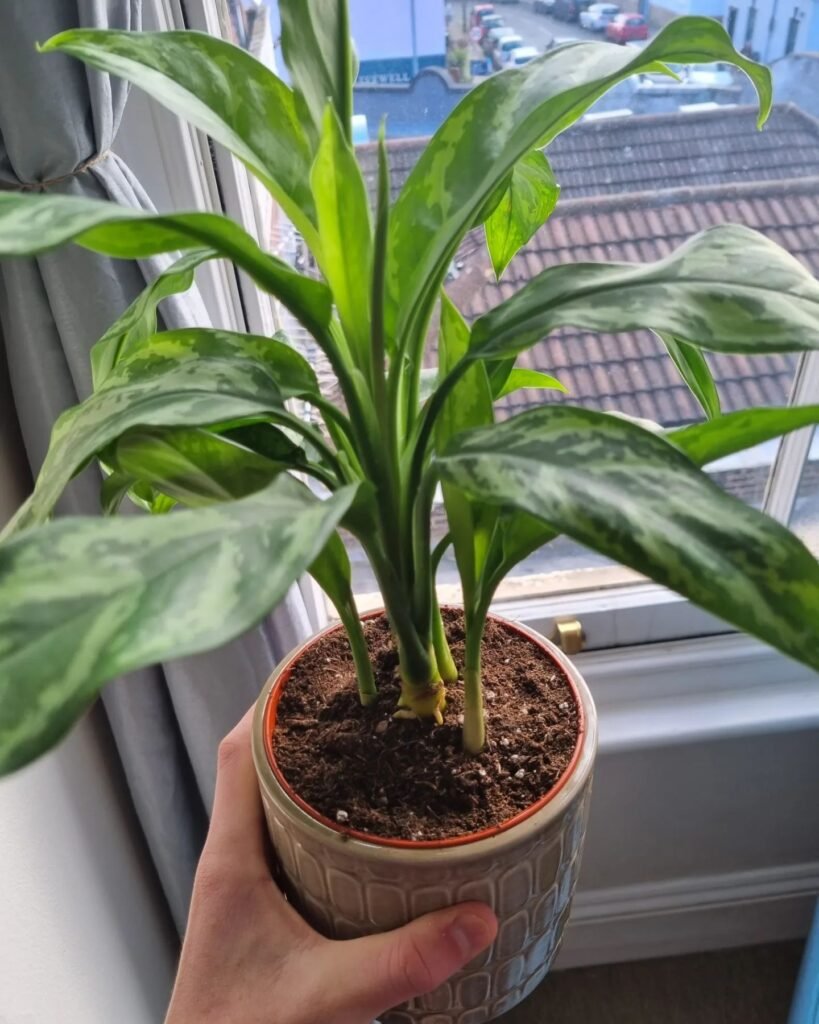
Aglaonema Maria is a variety of Chinese Evergreen that showcases its natural beauty through its stunning green foliage. Its large narrow, glossy oval leaves are a sight to behold, creating an instant visual impact in any space. What makes Aglaonema Maria truly captivating is its silver green variegation, which gently graces the leaf edges, adding an elegant touch to its overall appearance.
This ornamental plant is available in a range of leaf colours, from rich dark greens to shimmering silvers and even striking reds. The contrasting hues create a mesmerizing display that captures the attention of foliage plant enthusiasts and admirers of ornamental plants alike.
“Aglaonema Maria stands out in my collection of houseplants with its striking foliage and subtle variegation. It brings a touch of nature’s beauty indoors, effortlessly enhancing the aesthetic appeal of any room.”- Plant lover
With its unique and eye-catching appearance, Aglaonema Maria is a popular choice for those who appreciate the beauty and charm of foliage and ornamental plants. Its ability to effortlessly blend into any interior decor makes it a versatile option for adding a touch of nature’s elegance to homes, offices, and other indoor spaces.
 The Aglaonema Maria (Chinese Evergreen) hails from Asia’s lush tropical forests, flourishing in low light which mirrors its forest floor origins. Known for centuries in Asian cultures as a sign of longevity and luck, it adds an exotic historical touch to homes.
The Aglaonema Maria (Chinese Evergreen) hails from Asia’s lush tropical forests, flourishing in low light which mirrors its forest floor origins. Known for centuries in Asian cultures as a sign of longevity and luck, it adds an exotic historical touch to homes.
Light Requirements for Aglaonema Maria
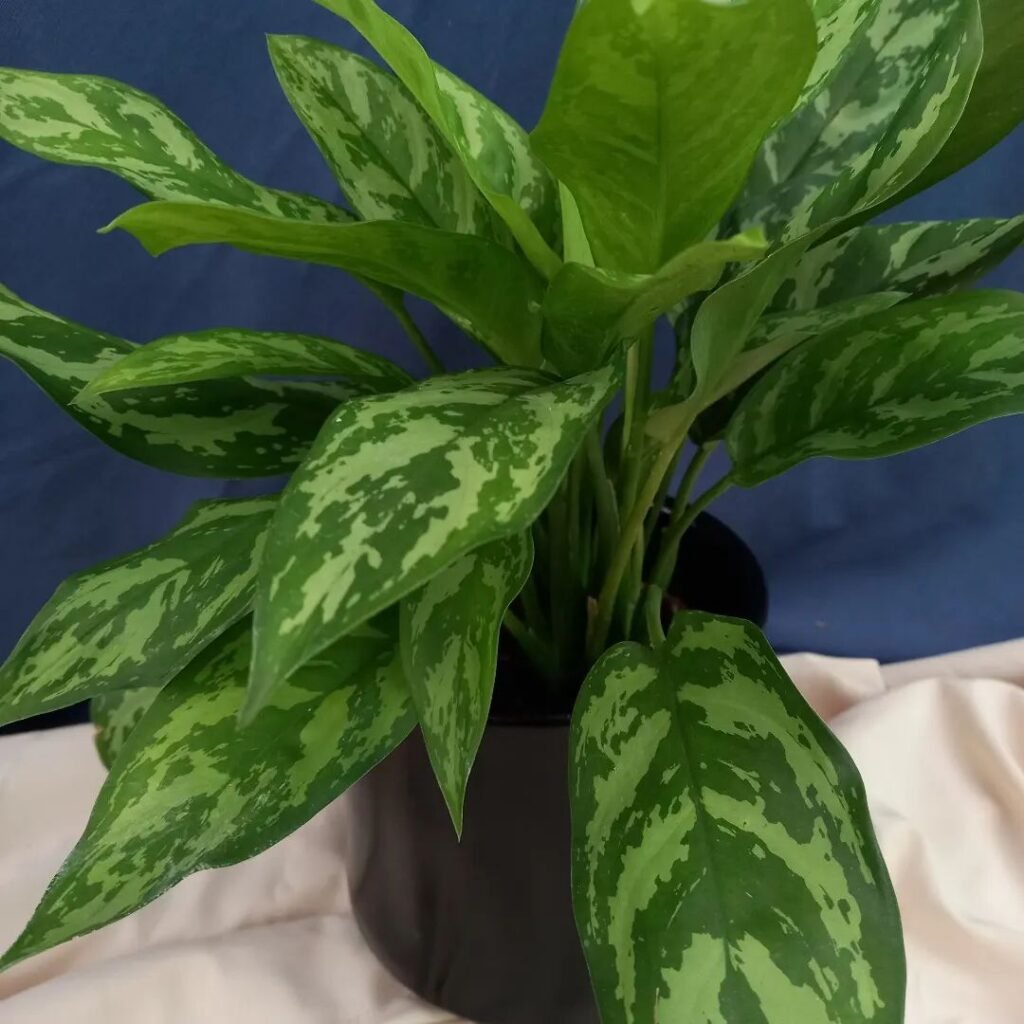
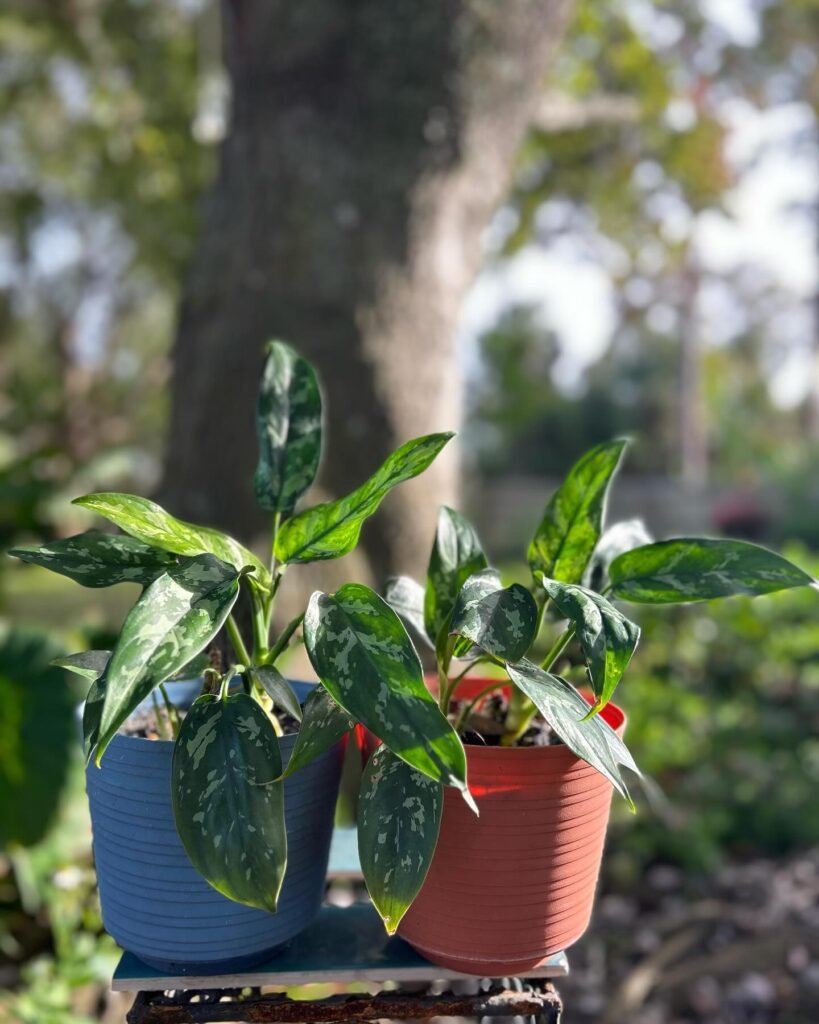
Aglaonema Maria, also known as Chinese Evergreen, is an ideal choice for indoor plant enthusiasts looking for low-light plants. This beautiful plant thrives in indirect light conditions, making it perfect for rooms with limited natural sunlight. Its ability to tolerate lower light levels sets it apart from many other houseplants.
It is important to note that Aglaonema Maria should not be placed in direct sunlight, as this can cause the leaves to scorch and result in damage. Indirect light provides the right balance for this plant, allowing it to flourish and maintain its health and vibrant foliage.
When considering the light requirements for Aglaonema Maria, it is crucial to find the optimal spot in your home where it can receive the right amount of indirect light. Placing it near a north or east-facing window is a great choice, as these areas tend to have bright, indirect light throughout the day.
Additionally, if you have other indoor plants that require brighter light, Aglaonema Maria can be placed nearby, benefiting from the ambient light. Grouping plants with different light requirements can create a visually appealing and cohesive indoor oasis.
Key Points:
- Aglaonema Maria thrives in indirect light conditions.
- It can tolerate lower light levels compared to many other houseplants.
- Avoid placing Aglaonema Maria in direct sunlight to prevent leaf scorching.
- North or east-facing windows provide ideal indirect light for this plant.
- Grouping Aglaonema Maria with other indoor plants can create a visually appealing setup.
I love how Aglaonema Maria can brighten up the darkest corners of my home with its gorgeous foliage. Its low-light tolerance makes it a go-to choice for any indoor space needing a touch of greenery.

Watering Tips for Aglaonema Maria (Chinese Evergreen)

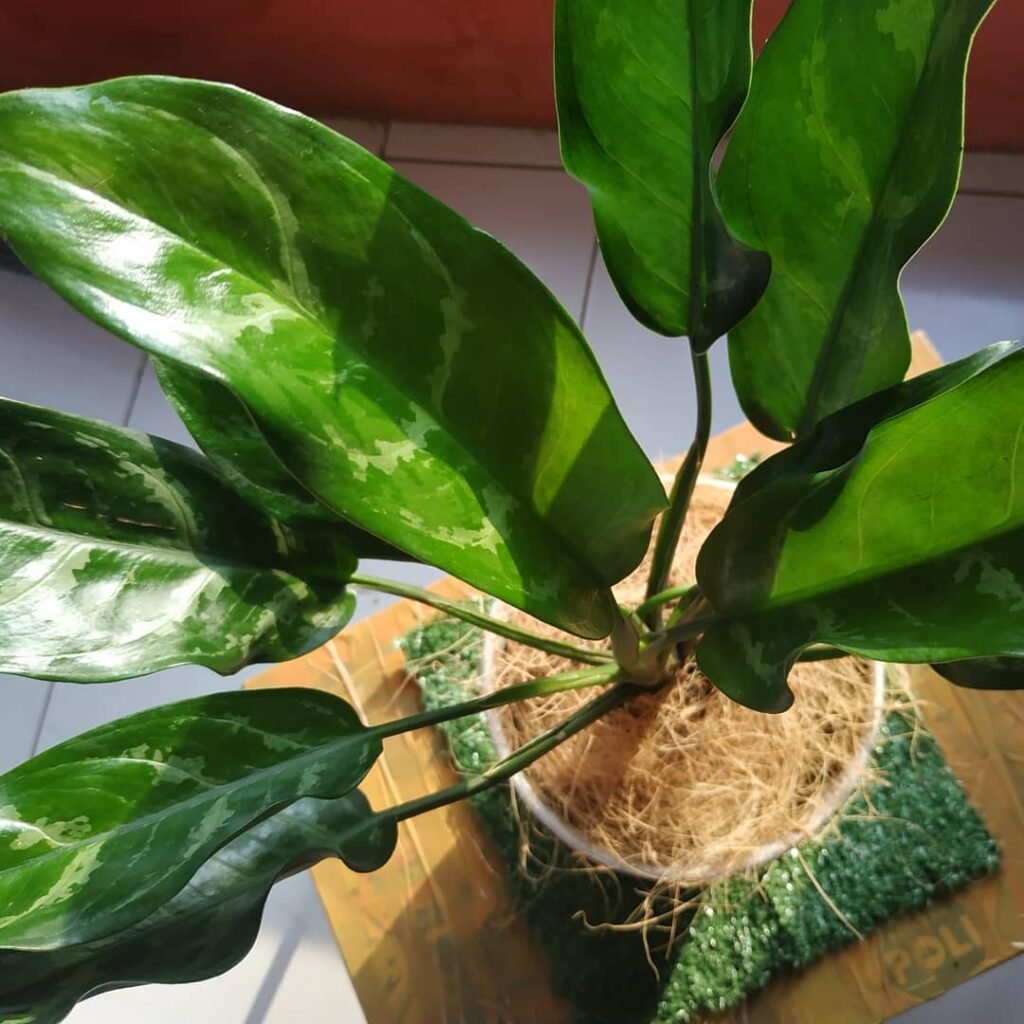
When it comes to caring for Aglaonema Maria, proper watering is crucial for its health and well-being. As an indoor plant lover, I understand the importance of providing the right amount of water to keep your Aglaonema Maria thriving.
For this easy-care plant, it’s all about finding the right balance. Aglaonema Maria prefers moist soil, but it should not be left waterlogged. To avoid overwatering, I recommend following these simple watering tips:
- Thorough watering: When it’s time to water, make sure to thoroughly saturate the soil. This ensures that the water reaches the plant’s root system properly.
- Drying out: After watering, allow the top inch of the soil to dry out before watering again. This helps prevent overwatering and keeps the roots healthy.
“To keep your Aglaonema Maria healthy, strike a balance between moist soil and avoiding overwatering.”
Maintaining the right level of humidity is also beneficial for Aglaonema Maria. This can be achieved by misting the leaves regularly. The increased humidity helps mimic the plant’s natural environment and keeps it thriving.

Fertilizing and Soil for Aglaonema Maria

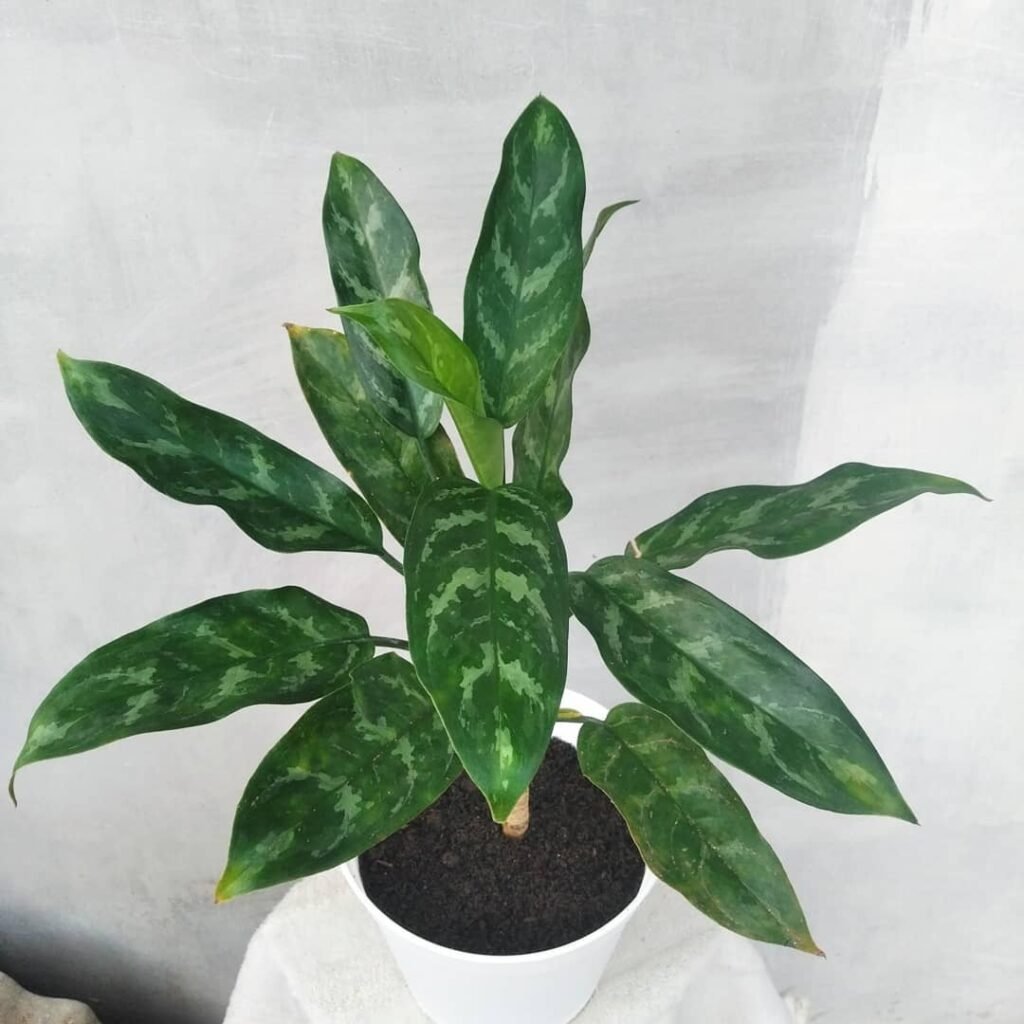
Aglaonema Maria, like any other indoor plant, requires proper fertilizing and soil to ensure its health and vibrant growth. The right combination of soil and fertilizer can provide the necessary nutrients for this stunning plant to thrive in your home.
Soil Needs
To meet the soil needs of Aglaonema Maria, it is crucial to provide well-draining soil that is slightly acidic. A suitable potting mix for this plant can be prepared by combining equal parts peat moss, perlite, and potting soil. This composition promotes good drainage and allows the roots to breathe, preventing waterlogged conditions that can harm the plant.
Fertilizing Tips
Fertilizing Aglaonema Maria during the growing season is essential to provide the necessary nutrients for healthy growth. Choose a balanced, water-soluble fertilizer designed specifically for indoor plants. Follow the instructions on the packaging to determine the appropriate amount and frequency of application.
I recommend fertilizing every 4-6 weeks during the active growth period, typically from spring to early autumn. This will provide the plant with a consistent supply of nutrients to support its development.
However, remember not to overfertilize the Aglaonema Maria, as excessive nutrients can cause fertilizer burn and damage the roots. It is always better to err on the side of caution and apply less fertilizer than to risk harming the plant.
Regularly monitoring the foliage of your Aglaonema Maria will help you gauge its nutrient needs. If you notice slow growth, pale leaves, or signs of nutrient deficiency, consider adjusting your fertilizing routine accordingly.
Pro Tip:
When it comes to fertilizing indoor plants like Aglaonema Maria, it is better to under-fertilize than over-fertilize. The goal is to provide a balanced amount of nutrients without overwhelming the plant’s delicate root system.

Pruning and Maintenance of Aglaonema Maria
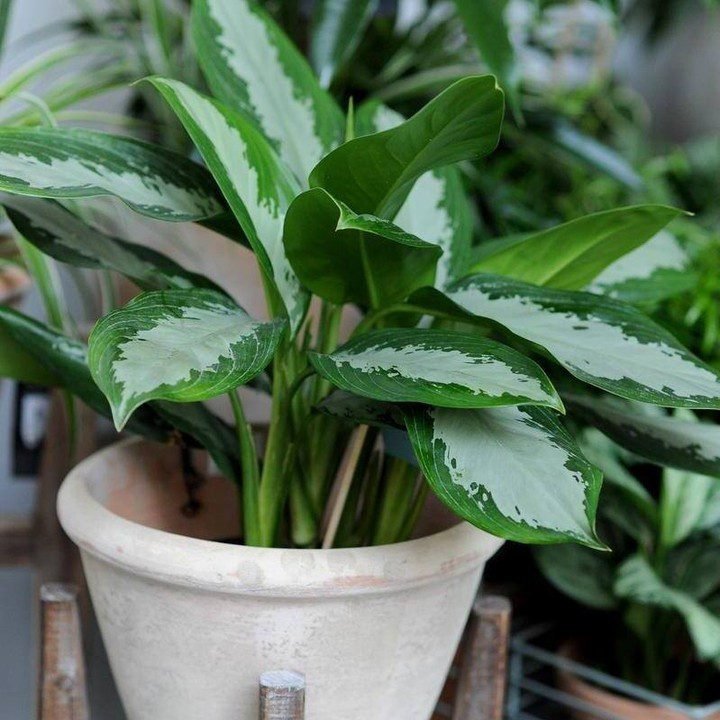
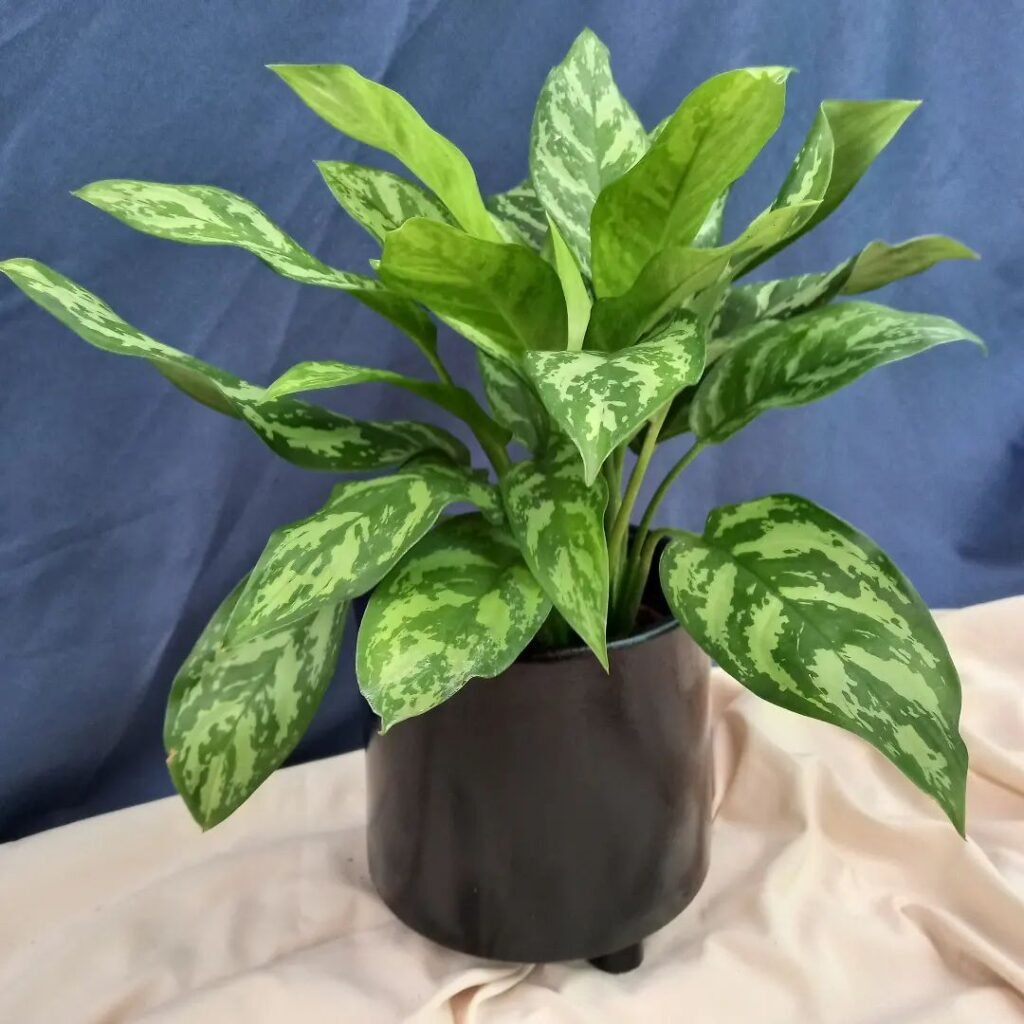
Pruning is an essential part of maintaining the health and appearance of Aglaonema Maria. To ensure the plant stays vibrant and beautiful, I recommend regular pruning and maintenance. Here are some tips to keep your Aglaonema Maria thriving:
1. Remove Dead or Yellowing Leaves
Inspect your Aglaonema Maria regularly and remove any dead or yellowing leaves. These leaves not only detract from its aesthetic appeal but can also sap energy from the plant. Pruning them allows for new growth and ensures the overall health of the plant.
2. Trim Leggy Stems
If you notice that the stems of your Aglaonema Maria are becoming leggy or elongated, it’s a good idea to trim them back. By doing so, you can encourage bushier growth and maintain a compact and attractive shape. Ensure to use clean, sharp pruning shears to make clean cuts.
3. Dust the Leaves
Regular maintenance of your Aglaonema Maria includes dusting the leaves. Dust can accumulate on the surface of the leaves, hindering the plant’s ability to photosynthesize effectively. Gently wipe the leaves with a soft, damp cloth to remove any dust and keep them clean and healthy. This will also improve the plant’s overall appearance.
“Regular pruning and maintenance are crucial for the health and aesthetics of your Aglaonema Maria. By removing dead leaves, trimming leggy stems, and dusting the leaves, you can ensure a vibrant and attractive indoor plant.”

Propagating Aglaonema Maria (Chinese Evergreen)


Propagating Aglaonema Maria can be easily done through division, making it a rewarding experience for plant lovers. When it’s time to repot your Aglaonema Maria, you can take the opportunity to split the plant at the base and create new plants. This process, known as division, involves separating the plant into smaller sections, each with their own healthy roots and stems.
To propagate Aglaonema Maria, carefully remove the plant from its pot and gently separate the root system into individual sections. Make sure each section has ample roots and stems to ensure successful propagation.
Once you have divided the plant, plant each section in its own pot filled with well-draining potting mix. Place the pots in a location with indirect light and provide regular watering to help the new plants establish their root systems. It is important to use pots that are appropriate for the size of the divided sections.
Spring or early summer is the best time to propagate Aglaonema Maria, as the plant is actively growing during this period, increasing the chances of successful propagation. Patience is key during this process, as it may take a few weeks to see new growth and establish healthy plants.

Repotting Tips for Aglaonema Maria

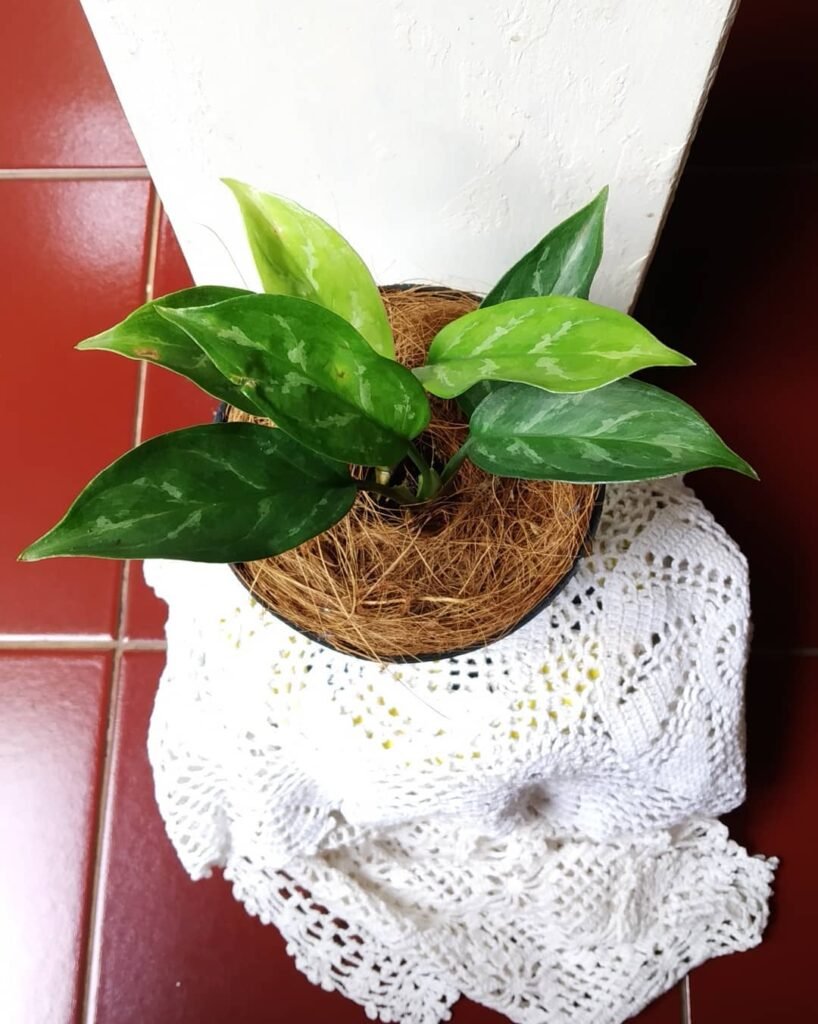
Aglaonema Maria, like other indoor plants, may require repotting every 1-2 years or when it outgrows its current pot. Repotting allows the plant to have ample space for new growth and ensures its overall health and vitality.
Choosing the Right Pot and Potting Mix
When repotting Aglaonema Maria, it is essential to select a pot that is slightly larger than its current container. This will provide enough room for the roots to spread and develop. Opt for a pot with drainage holes to prevent waterlogging, as stagnant water can lead to root rot.
For the potting mix, choose a well-draining soil mixture that is suitable for indoor plants. An ideal mix consists of equal parts peat moss, perlite, and potting soil. This combination allows for adequate drainage while retaining enough moisture for the plant’s roots.
Gently Loosening the Roots
Prior to placing the Aglaonema Maria in its new pot, gently loosen the roots. This will encourage the roots to grow and penetrate into the fresh soil, promoting healthy and robust growth. Be careful not to damage the roots while doing this.
Transferring the Plant to the New Pot
Once the roots have been loosened, carefully place the Aglaonema Maria in its new pot. Ensure that the plant is positioned centrally, allowing space for the roots to spread evenly. Fill the remaining space with the potting mix, gently pressing it down to secure the plant.
Watering and Adjusting to its Spot
After repotting, give the Aglaonema Maria a thorough watering to help settle the soil and rehydrate the roots. Allow the excess water to drain out completely before placing the plant back in its designated spot.
It is important to note that newly repotted plants may experience some stress initially. To help the Aglaonema Maria adjust, place it in a location with indirect light and gradually increase exposure to brighter light over time.
Monitoring and Care
Keep a close eye on the plant after repotting, ensuring that the soil remains evenly moist but not waterlogged. Monitor for signs of overwatering or underwatering, such as wilting or yellowing leaves, and adjust your watering routine accordingly.
Remember to maintain the regular care routine for Aglaonema Maria, including providing the appropriate amount of light, humidity, and fertilization, for optimal growth and longevity.
Growing Aglaonema Maria in the UK
Aglaonema Maria is a fantastic choice for indoor plants in the UK, thriving well in the country’s climate and earning the adoration of many plant enthusiasts. It can be successfully grown in most regions of the UK, making it an ideal houseplant for homes across the country.
To ensure optimal growth, there are a few essential tips to follow. First and foremost, provide your Aglaonema Maria with the right amount of light. While it can tolerate lower light levels, placing it near a window with indirect sunlight is ideal. Avoid direct sunlight, as it may scorch the leaves.
Proper watering is also crucial. It’s important to water your Aglaonema Maria regularly, allowing the soil to dry out slightly between each watering. Avoid overwatering, as it can lead to root rot. A good rule of thumb is to water when the top inch of the soil feels dry to the touch.
Maintaining proper humidity levels is important for the health and well-being of your Aglaonema Maria. You can increase humidity by misting the leaves regularly or placing a tray of water near the plant.
During the growing season, it is recommended to fertilize your Aglaonema Maria with a balanced, water-soluble fertilizer according to the instructions on the packaging. This will provide the necessary nutrients for optimal growth and vibrant foliage.
With proper care and attention, your Aglaonema Maria will thrive in the UK. Its elegant foliage and adaptability to different conditions make it an excellent addition to any indoor plant collection. By following these growing tips, you can enjoy the beauty and benefits of Aglaonema Maria in your UK home.
 The Aglaonema Maria (Chinese Evergreen) is admired not only for its eye-catching leaves but also for its ability to purify the air, removing indoor toxins. It’s an ideal choice for enhancing your space with greenery while also improving air quality.
The Aglaonema Maria (Chinese Evergreen) is admired not only for its eye-catching leaves but also for its ability to purify the air, removing indoor toxins. It’s an ideal choice for enhancing your space with greenery while also improving air quality.
Aglaonema Maria Varieties
Aglaonema Maria is just one of the many varieties of Chinese Evergreen available. There are several other cultivars and hybrids with unique leaf patterns and colors. Some popular varieties include:
- Aglaonema Maria Christina: Known for its beautiful variegated leaves with shades of green and silver, this variety adds a touch of elegance to any indoor space.
- Aglaonema Silver Bay: With its stunning silver-gray leaves, this variety is an excellent choice for those seeking a more modern and contemporary look.
- Aglaonema Red Siam: This variety stands out with its vibrant red-tinged leaves, adding a splash of color to your indoor garden.
Each variety of Aglaonema Maria has its own charm, making it a wonderful addition to any collection of indoor plants. Whether you prefer the classic green and silver combination or want to experiment with bolder colours, there is a variety of Aglaonema Maria that will suit your taste and enhance the beauty of your indoor space.
Aglaonema Maria Pests Control
While caring for Aglaonema Maria, it’s important to note that despite being a hardy and pest-resistant houseplant, it can still be vulnerable to certain pests. Two common pests that may affect Aglaonema Maria are mealybugs and red spider mites. To ensure the health of your indoor plant, it’s crucial to regularly inspect it for signs of infestation.
Look out for webs or clusters that resemble cotton on the plant’s leaves or stems. If you spot any of these, it’s essential to take immediate action to control the pests and prevent further damage.
To combat mealybugs and red spider mites, you can use insecticidal soap or neem oil, following the instructions on the packaging. These organic solutions are effective in eliminating pests without harming the plant.
In addition to treating the infestation, it’s vital to practice good care habits to prevent pest problems. Ensure that your Aglaonema Maria receives proper watering, light, and fertilization, as a healthy plant is less likely to attract pests.
Important tips for pest control:
- Regularly inspect the plant for signs of pests.
- Act promptly at the first sight of infestation.
- Use organic solutions like insecticidal soap or neem oil to eliminate pests.
- Maintain proper care practices to prevent pest problems.
Helpful Videos about Growing Aglaonema Maria
Considering growing Aglaonema Maria? I’ve compiled some helpful videos for you. They provide clear guidance to ensure your plant’s success, covering essential care tips and useful strategies. Ideal for both experienced gardeners and newcomers, these tutorials aim to demystify the care process for Aglaonema Maria and ensure a satisfying gardening venture.
- The Ultimate Guide to Caring for Aglaonema | Chinese Evergreen Houseplant Care
- PROPAGATE Aglaonema Like A PRO
Frequently Asked Questions about Aglaonema Maria (Chinese Evergreen)

Keen to make your Aglaonema Maria (Chinese Evergreen) a real showstopper? Check out my straightforward FAQ for all the guidance you need on looking after your Aglaonema Maria. From finding the ideal spot in your home to watering just right, I’ve got everything you need to ensure it flourishes.
It prefers low to medium light, away from direct sunlight. A spot with filtered light is ideal.
Water it when the top inch of soil feels dry. Overwatering can harm it, so let the soil guide you.
A well-draining, peat-based potting mix is perfect. It likes moist but not soggy soil.
Yellow leaves or a mushy stem can be signs of overwatering. Let the soil dry out a bit more between waterings.
It can enjoy a summer outdoors in a shady spot but bring it inside before the temperature drops below 16°C.
Feed it with a balanced, water-soluble fertilizer every month during spring and summer.
It can grow up to 30-60cm tall, making it an excellent size for indoor spaces.
Repot in spring every 2-3 years or when it’s root-bound, using a slightly larger pot each time.
Yes, it’s known for its air-purifying qualities, making it a great addition to your home.
It prefers warmer temperatures, ideally between 18-25°C. Avoid cold drafts and sudden temperature changes.
Yes, it can be toxic if ingested by pets, so it’s best to keep it out of their reach.
Brown tips can result from too much direct sunlight, low humidity, or fluoride in water. Try using filtered water if tap water is high in fluoride.
Place it on a pebble tray filled with water or use a small humidifier nearby, especially in dry environments.
Yes, it can be easily propagated by division during repotting or from stem cuttings placed in water or soil.
Keep an eye out for common pests like spider mites or mealybugs. Wipe the leaves with a soapy water mixture or use an appropriate insecticide if necessary.
Use a pot with good drainage holes to prevent water from sitting at the bottom. Ceramic or plastic pots both work well, but ensure they’re the right size for the plant’s root ball.
Gently wipe the leaves with a damp cloth to remove dust. This not only keeps the plant looking fresh but also helps it absorb more light.
Ensure it’s not in too dark a spot and that you’re not over or under-watering. A balanced fertilizer during the growing season can also help.
I trust this has sorted out how to look after your Aglaonema Maria (Chinese Evergreen). Still got any niggling doubts? Pop them in the comments, and I’ll nip back with a reply. Keep in mind, all gardeners start from scratch, and getting to grips with the unique traits of your Aglaonema Maria is a fantastic adventure.

